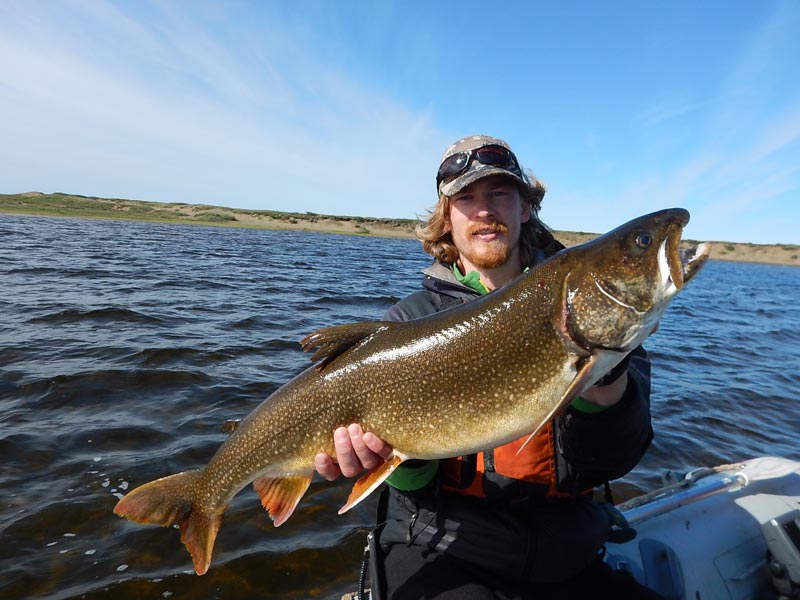Fish for Trees: Using Lake Trout Ear-bones to Reconstruct Changes in Arctic Climate
Understanding climate change and how ecosystems and organisms are responding to climate change are first order interests for adaptive management in the Arctic. Because trees are mostly absent in the Arctic and other proxy records such as lake sediment cores typically represent century to millennial scales, looking for shorter-term proxy indicators of climate change are needed. Lake trout are found in many deep lakes and are relatively long-lived (50 years or greater) and analysis of otolith (ear-bone) growth increments may provide an index of summer water temperature and productivity. Extending these indicators more broadly to air temperature has great potential because lakes closely track meteorological variability.
Recognizing this potential, the Alaska Climate Science Center (AK CSC) along with USGS’s National Institute of Water Resources (NIWR) recently awarded a grant to UAF supporting a new graduate student, Eric Torvinen (SFOS), focused on using fish for trees. With guidance from Jeff Falke (USGS Cooperative Research Unit, SFOS, IAB), Chris Arp (UAF-WERC), Matthew Whitman (BLM), Jeff Adams (USFWS), and Chris Zimmerman and Ben Jones (USGS ASC), Eric will put his childhood talents of lake trout fishing on Lake Superior to the test in the Arctic. The Pleistocene Sand Sea region of the Arctic Coastal Plain is the focus area for this project because the landscape is dominated by deep lakes set in dune troughs that support populations of lake trout. These lakes can exceed 20 m in depth and have varying degrees of connectivity to stream networks, yet little is known about their origin and how long lake trout populations have persisted there. Even more compelling is that this region of the Arctic is experiencing some of the most rapid recent changes in air temperature, but weather station records only date back 15 years. This new project, coupled with data collected from a NSF-AON lakes observation network (CALON) and model output from an Arctic LCC funded project Fish CAFE, focused on understanding how aquatic habitat is responding to climate and land use change, will attempt to extend this climate record 50 years or longer. Eric’s studies will also focus on better understanding the ecology of lake trout in the rapidly changing Arctic.

A lake trout captured by Kurt Heim (recent M.S. graduate in SFOS) is one of nine specimens collected this past summer for analysis from lakes near Inigok (BLM field camp) on the Arctic Coastal Plain of northern Alaska. Photo by Lydia Smith, USFWS.
Results and Media Coverage
- Torvinen M.S. Thesis (journal manuscript coming soon!)
- Alaska Science Forum: Far North lake trout are living in a mystery

